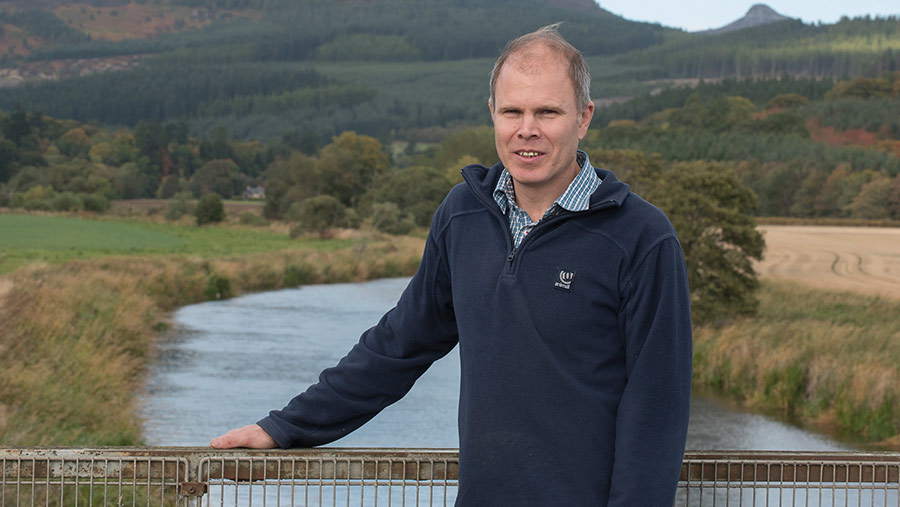Farmer Focus: 27 dry days damage crop prospects
 © Angus Findlay
© Angus Findlay Our weather continues to be extreme. It finally stopped raining in mid-May, but what followed was 27 dry days with only one shower – bringing 0.25mm of rain – in the middle.
While at first this dry weather was welcome, it quickly became damaging to crop growth.
A spell of high temperatures and drying wind in mid-June ensured very dry silage, but also stressed crops. Late-drilled barley in particular has struggled and is looking very short and thin.
See also: Soft feed wheat newcomer looks promising for the North
Following this dry interlude, we have now returned to small amounts of rain every day, preventing crops from deteriorating further, but also preventing any spraying now for 10 days and counting.
The recent Royal Highland Show could have been an opportunity for the Scottish government to put some flesh on the bones of its future agricultural policy, but the industry has been sadly disappointed by another announcement with very little new detail.
It is encouraging to see Defra in England reviewing its scheme and making it much more flexible, to allow farmers to pick a range of options tailored to their business.
Hopefully, this injection of common sense will be repeated north of the border before we get too far down the line of very prescriptive packages, all with one off-putting requirement.
It is encouraging to see many farmers and agronomy companies trying new things such as different cover crops, rotations and drilling systems, building up knowledge of what works and, more importantly, what doesn’t.
Hopefully, in future years we have the opportunity to select options which allow this knowledge to be put into practice, to benefit both soils and the wider environment and also to access government investment to support this.
Meanwhile, markets are all over the place, responding to every weather forecast and crop report.
I have made a few small sales when there have been price increases, but every time I expect the market to increase further it loses a week’s gains in a few hours.
The next few weeks will determine both our yields and whether the world markets move to a value that leaves a return from our level of production.


